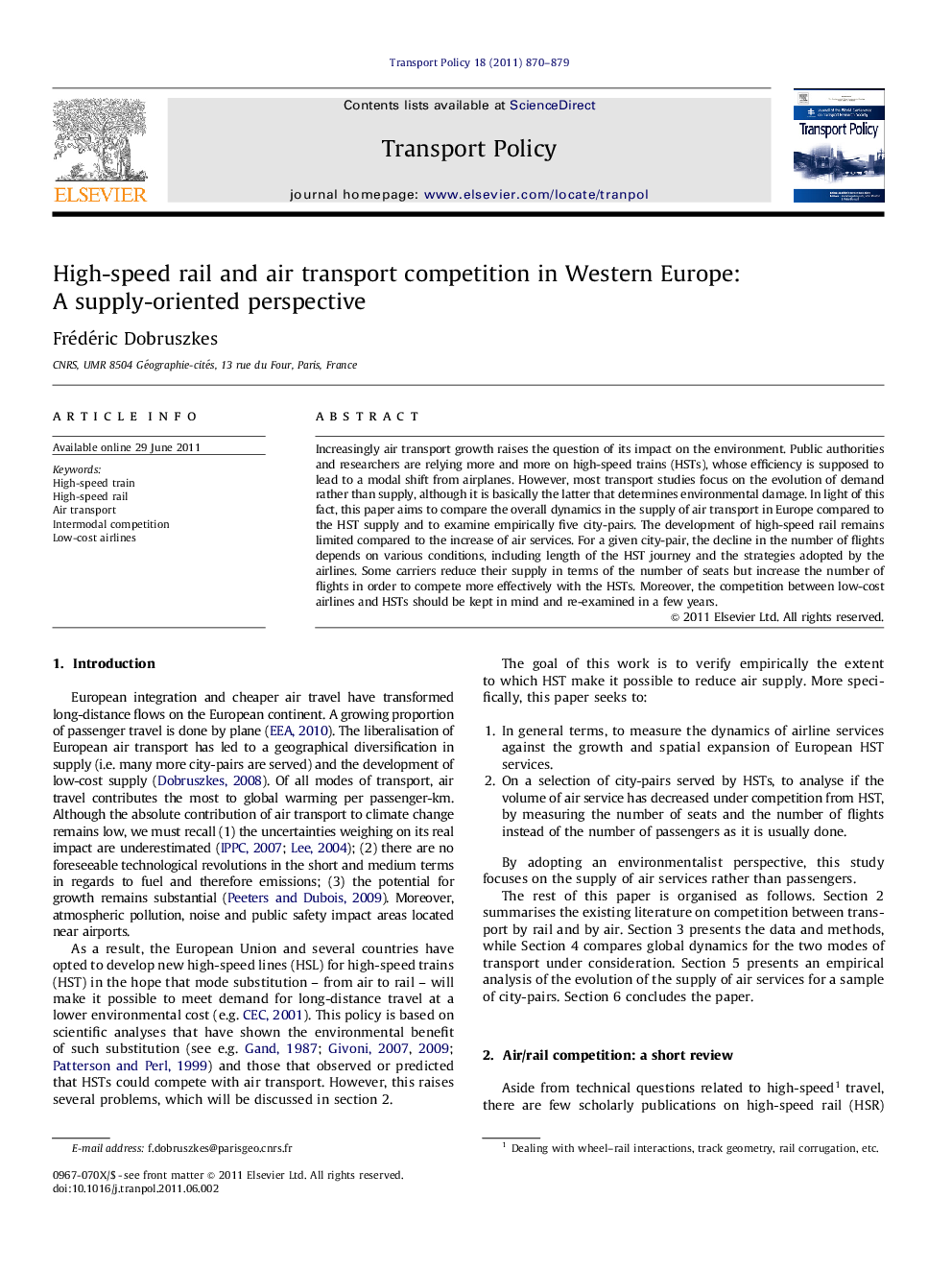| Article ID | Journal | Published Year | Pages | File Type |
|---|---|---|---|---|
| 1065326 | Transport Policy | 2011 | 10 Pages |
Increasingly air transport growth raises the question of its impact on the environment. Public authorities and researchers are relying more and more on high-speed trains (HSTs), whose efficiency is supposed to lead to a modal shift from airplanes. However, most transport studies focus on the evolution of demand rather than supply, although it is basically the latter that determines environmental damage. In light of this fact, this paper aims to compare the overall dynamics in the supply of air transport in Europe compared to the HST supply and to examine empirically five city-pairs. The development of high-speed rail remains limited compared to the increase of air services. For a given city-pair, the decline in the number of flights depends on various conditions, including length of the HST journey and the strategies adopted by the airlines. Some carriers reduce their supply in terms of the number of seats but increase the number of flights in order to compete more effectively with the HSTs. Moreover, the competition between low-cost airlines and HSTs should be kept in mind and re-examined in a few years.
► HSR remains spatially limited compared to the expansion in the supply of air transport. ► Travel time seems to remain a strong factor of intermodal competition. ► The decline in the number of flights depends on various conditions. ► HST services may face fierce competition from low-cost airlines. ► Results call for exhaustive multifactorial analysis of competition.
